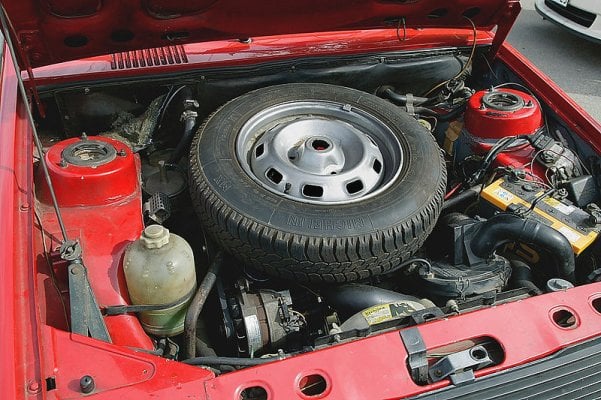Hey y'all. This thread brings up a question, but first some input.
I have the regular spare under the back of the dodge ram Sb with HAWK on it. Good for usual travels. I have a front receiver hitch mounted and this allows me to put a spare tire there when traveling off the beaten path (or if I plan to go to Alaska!) I have only had to use a 2nd spare only once, but man was it good to have.
This system works well, but others I have heard say that sometimes a front mounted tire will block air to the radiator and sometimes folks will run hot or overheat. Never had that problem myself, but I have not done a lot of travel in hotter places like the southwest. I notice some increase noise with this setup, but after a while, i find it does not bother me much anymore. In the rain, I find the tire will screw with the aerodynamics of the front of the truck and i get water splatter all over the windshield. This is at highway speeds. I just run the wipers more and it seems to be less of an issue. Of course, the tire will ruin a little of your front view, but usually not a problem (unless parking.....)
One thing i like is that ones that mount to the back often make it harder to open the camper door. the tire has to swing out of the way to get to the door. I would think this would be a hassle. On the other hand, it makes the back door more secure. Hard to be inside in stealth mode if you have to leave the tire swung open. Of course, someone could lock you into your camper if they closed the tire mount with you inside. Someone talked about this somewhere once, but I cannot remember where.
Another trick, when traveling on the state ferries, is to remember the fee is per vehicle until over 20 feet. My camper just fits under this, but with the spare it is a few inches over. When at the kiosk, I make sure to pull as forward as I can so they don't see the front tire as long.....they tend to forget and it and costs a lot less. The only time I have been charged the extra length fees is when I have had the spare mounted on the front. If I mount things on the back, they usually miss it and no extra charge. I notice in Canada, the ferry guys will bring out a measuring tape....If I am not in a rush, I will take the spare and mount off before getting in line. The cost difference can be a lot of bucks, depending on the route. In Washington, especially off season, they seem to care less.
If I had one on the back, I might mount a bike carrier onto it to carry the mountain bike on some occasions. Tried it on the front once, but man those bugs are sometimes hard to get off.
My question to those in the know, is how do you attach the tire/wheel to the mount? I had some large bolts and nuts that came with mine.....was wondering if there is a way to use extra lug nuts as this would be a good way to store them. Not sure if there is some standard for the bolt??? Never hurts to have a few spare lug nuts. Someone also mentioned that they had a spare stolen off a setup like this. I have a lock for the receiver and a wire lock for securing the tire to the hitch as well. Have never actually used it since when off on the backroads this usually isn't a problem. I would imagine getting there is where the problem might be.
Anyone else have useful tidbits for carrying the extra spare?
Dave in Seattle

